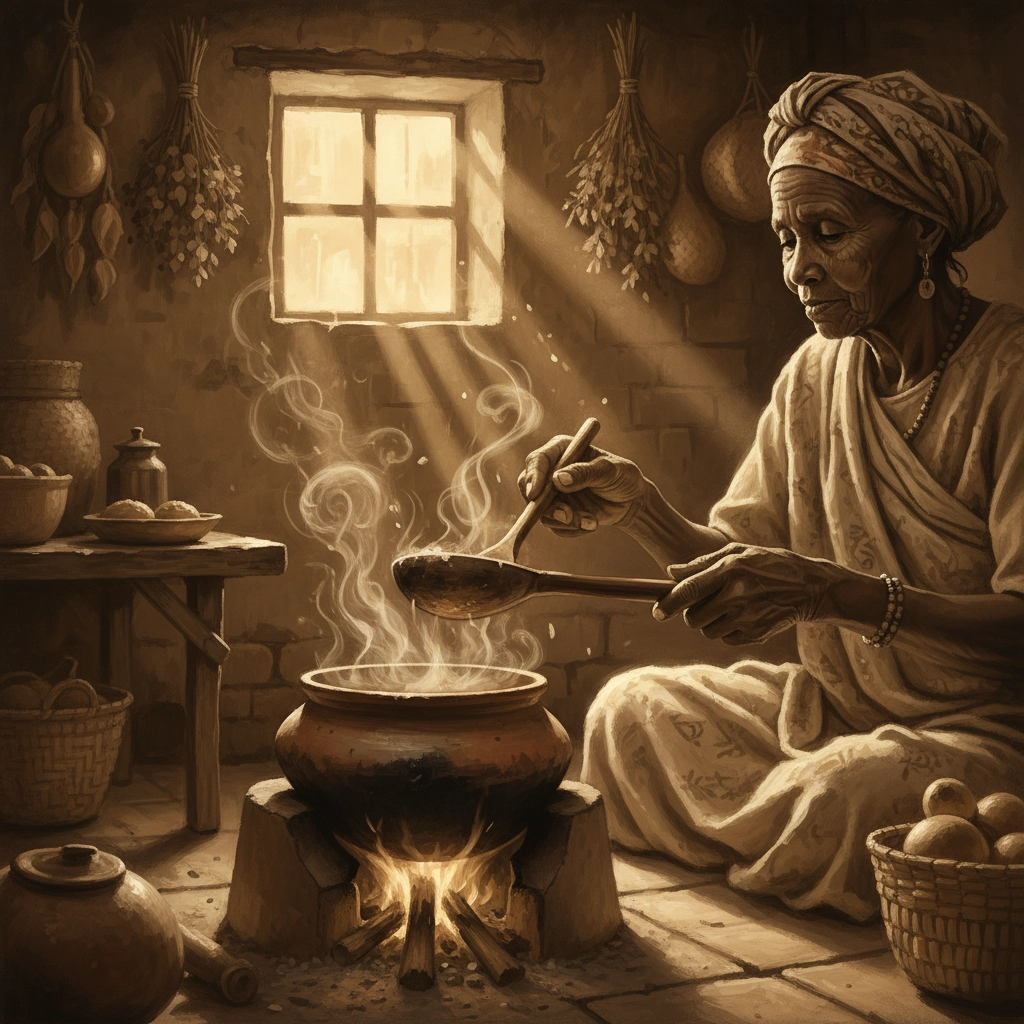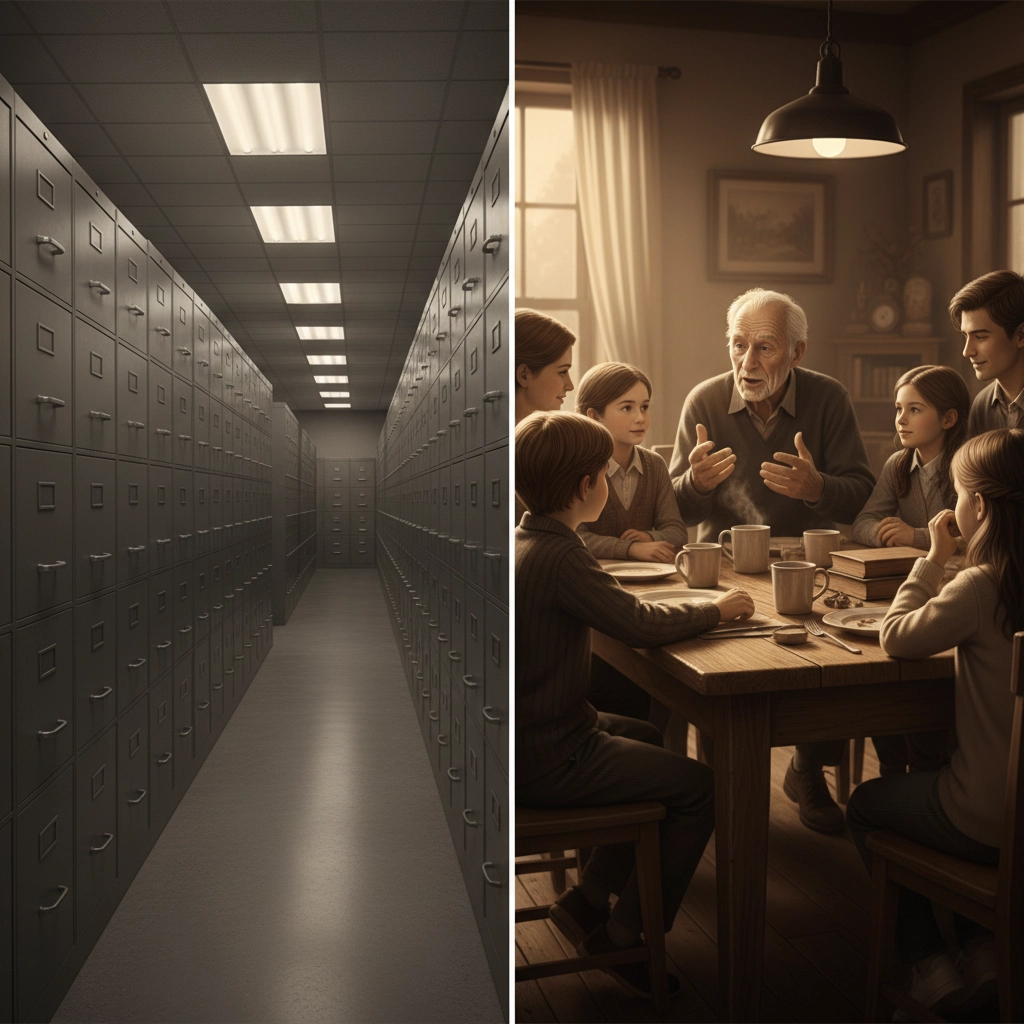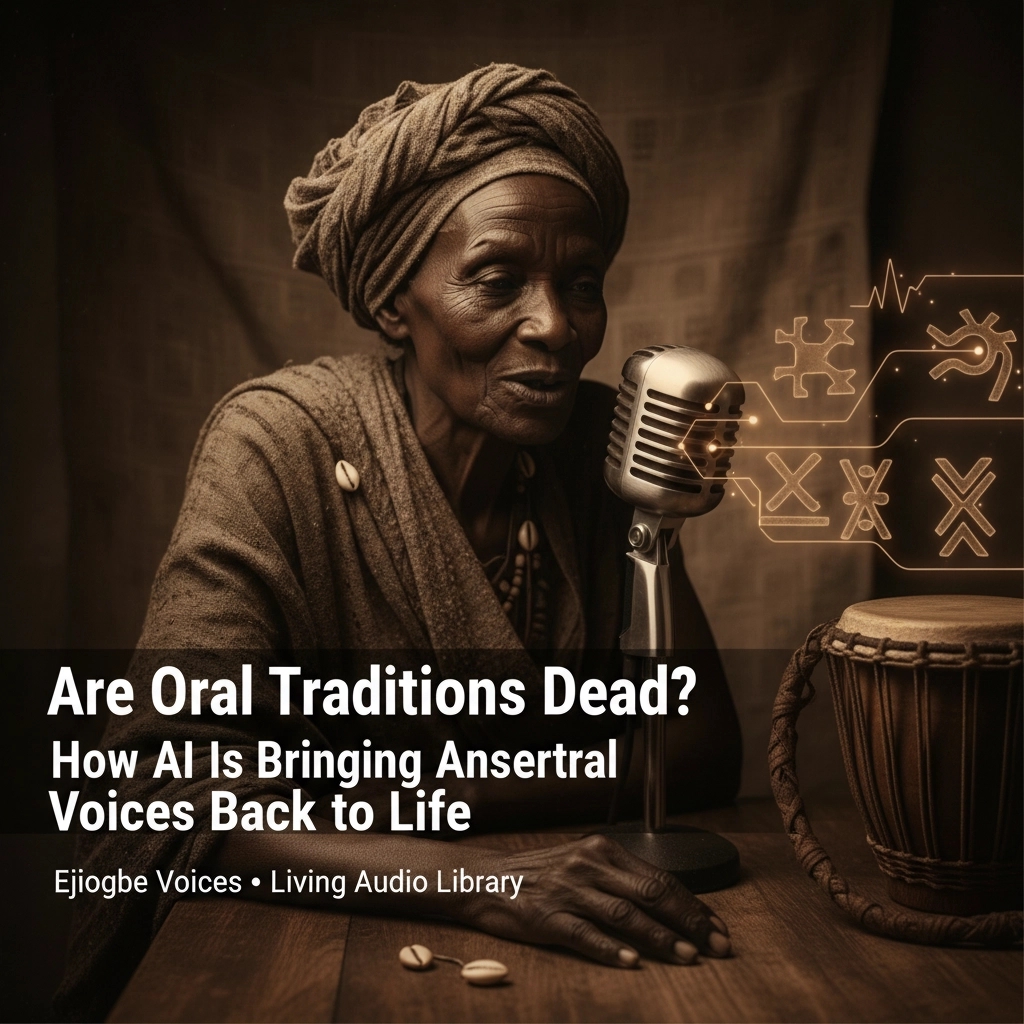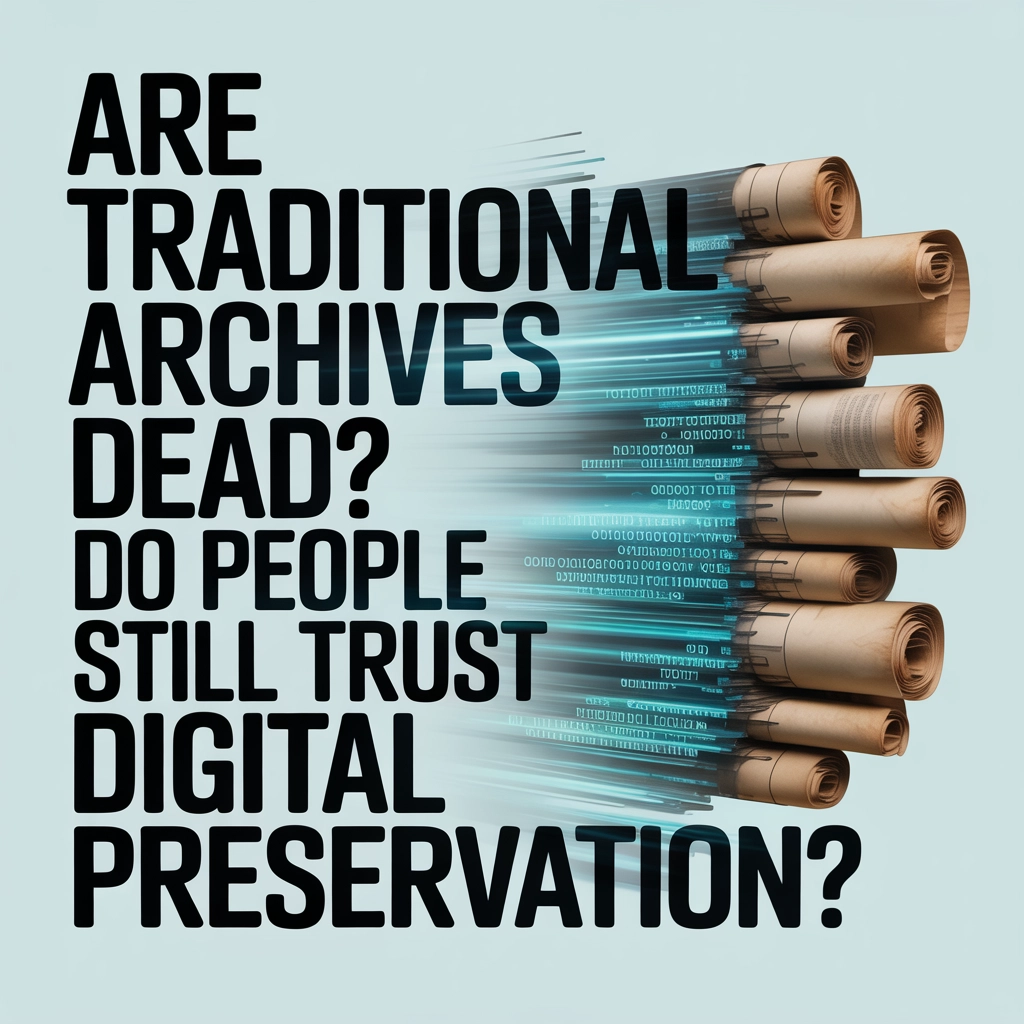When your grandmother shares a traditional recipe passed down through seven generations, she doesn't just recite ingredients. She tells you about the hands that first mixed those spices, the celebrations where that dish brought families together, and the prayers whispered over the cooking pot. This is the profound difference between living culture and archived artifacts: and it's exactly why community-led archiving transforms preservation from documentation into continuation.
Institutional archives serve important purposes, but when it comes to preserving the sacred stories, ancestral wisdom, and cultural practices that define our communities, nothing compares to the power of community-led preservation. Here's why communities themselves are the ultimate guardians of their heritage.
The Sacred Trust: Who Should Hold Our Stories?
Traditional institutions approach cultural preservation like museum curators: cataloging, categorizing, and storing artifacts for future study. But our oral traditions, prayers, and ancestral teachings aren't museum pieces. They're living elements of identity that require understanding, context, and reverence to survive authentically.

Community-led archiving recognizes that the people who lived these stories are the ones best equipped to preserve them. When elders in Yoruba communities record their own oriki (praise poems), they include the subtle vocal inflections, the emotional undertones, and the spiritual significance that outsiders might miss entirely. These nuances don't translate in institutional settings where cultural context gets lost in academic interpretation.
Community archiving also addresses the fundamental question of ownership. Who has the right to decide which stories get preserved and which get forgotten? Institutional archives often reflect the biases and priorities of their funders and staff, potentially overlooking the practices and narratives that communities value most. When communities control their own archiving, they ensure their most precious wisdom receives the attention and respect it deserves.
The Power of Authentic Storytelling
Institutional preservation typically involves intermediaries: researchers, archivists, and academics who interpret and present cultural materials through their own filters. This creates layers of separation between the original source and the preserved record, often resulting in sanitized or academically altered versions of living traditions.
Community-led archiving eliminates these barriers entirely. When community members preserve their own stories, the authenticity remains intact. The jokes, the informal teachings, the spontaneous prayers, and the generational wisdom flow naturally because there's no external pressure to conform to institutional standards or academic expectations.
Consider the difference between a university researcher documenting a traditional healing practice versus community elders recording their own knowledge for their descendants. The researcher focuses on methodology and measurable outcomes. The elders share the spiritual preparation, the ancestral connections, the personal relationships with plant medicines, and the ceremonial protocols that make the practice sacred rather than simply functional.
Deep Cultural Understanding and Context

Institutions excel at preservation techniques, but they often struggle with cultural context. A university archive might perfectly preserve the audio quality of a traditional song while completely missing the seasonal significance, the ceremonial timing, or the community relationships that give that song its power.
Community-led archiving ensures that cultural context travels with cultural content. When community members document their practices, they naturally include the background stories, the relationships between different traditions, and the living connections that institutional outsiders might overlook or misunderstand.
This contextual understanding extends to language preservation as well. Community members recording in their native languages don't just capture words: they preserve the emotional weight, the cultural humor, the generational differences in dialect, and the spiritual significance embedded in ancestral tongues. Institutional recordings often feel clinical by comparison, missing the warmth and life that make languages worth preserving.
Trust and Accessibility Within Communities
Perhaps most importantly, community-led archiving builds trust within the very communities it serves. Many families and elders feel hesitant about sharing sacred knowledge with institutional researchers who might not understand the spiritual significance or appropriate use of certain practices.
When preservation happens within trusted community networks, sharing becomes more generous and complete. Elders feel safe recording their deepest wisdom when they know it will be held by people who understand its sacred nature. Families participate more openly when they trust that their stories will be honored rather than analyzed.
This trust also ensures ongoing accessibility. Community-controlled archives remain available to the people who need them most: the children, grandchildren, and future generations who will carry these traditions forward. Institutional archives often create barriers to access through academic protocols, geographic distance, or cultural unfamiliarity.
Responsive to Community Needs and Priorities

Institutional preservation follows institutional timelines and priorities. Research grants, academic calendars, and administrative procedures determine what gets documented and when. But cultural preservation can't wait for convenient scheduling or institutional approval.
Community-led archiving responds to urgent community needs in real-time. When an elder's health begins declining, the community can immediately begin recording sessions. When seasonal practices arise, community members can document them as they happen. When family stories emerge during gatherings, they can be preserved in the moment rather than scheduled for future institutional visits.
This responsiveness also means community archives evolve with their communities. As traditions adapt to modern life, as younger generations ask new questions, as communities face new challenges, community-led archives grow and change organically. Institutional archives often create static snapshots, but community archives capture living, breathing culture in motion.
Technology That Serves Communities
Modern technology has democratized archiving in ways that make community-led preservation more powerful than ever before. Platforms like Ejiogbe Voices demonstrate how app development can be specifically designed to serve community archiving needs rather than institutional requirements.
Community-focused archiving technology prioritizes ease of use, cultural sensitivity, and community control over technical complexity. These tools recognize that the most important archives are created by elders who may not be tech-savvy, by families gathering around kitchen tables, and by communities celebrating together rather than by professional archivists in controlled environments.
The best community archiving platforms also build in cultural protections: ensuring that sacred materials remain within trusted community circles, that access controls respect cultural protocols, and that the technology serves the community's values rather than forcing communities to adapt to technical limitations.
Building Bridges Between Generations

Community-led archiving naturally creates opportunities for intergenerational connection that institutional preservation simply cannot replicate. When families work together to record their elder's stories, when children ask questions during recording sessions, when teenagers help with the technical aspects while learning cultural content, the archiving process itself becomes a form of cultural transmission.
These shared archiving experiences create new memories while preserving old ones. The laughter during recording sessions, the discoveries of forgotten family stories, the moments when elders remember additional details: all of these become part of the family's ongoing cultural narrative rather than academic exercises.
Young community members also feel more invested in preservation when they participate directly rather than simply receiving institutional materials. They understand the effort, love, and intention behind community archives because they've been part of creating them.
The Future Belongs to Communities
While institutional archives will always have their place in formal preservation, the future of cultural continuity lies in empowering communities to preserve their own heritage. When communities control their archiving, they ensure that preservation serves continuation rather than just documentation.
Community-led archiving honors the wisdom of our elders, respects the sacred nature of cultural knowledge, and creates accessible resources for future generations: all while strengthening the community bonds that make culture worth preserving in the first place.
The question isn't whether communities can match institutional preservation standards: it's whether institutional preservation can match the depth, authenticity, and cultural reverence that communities bring to protecting their own heritage. Every time communities choose to archive their own stories, they choose to keep their culture alive rather than simply stored.



